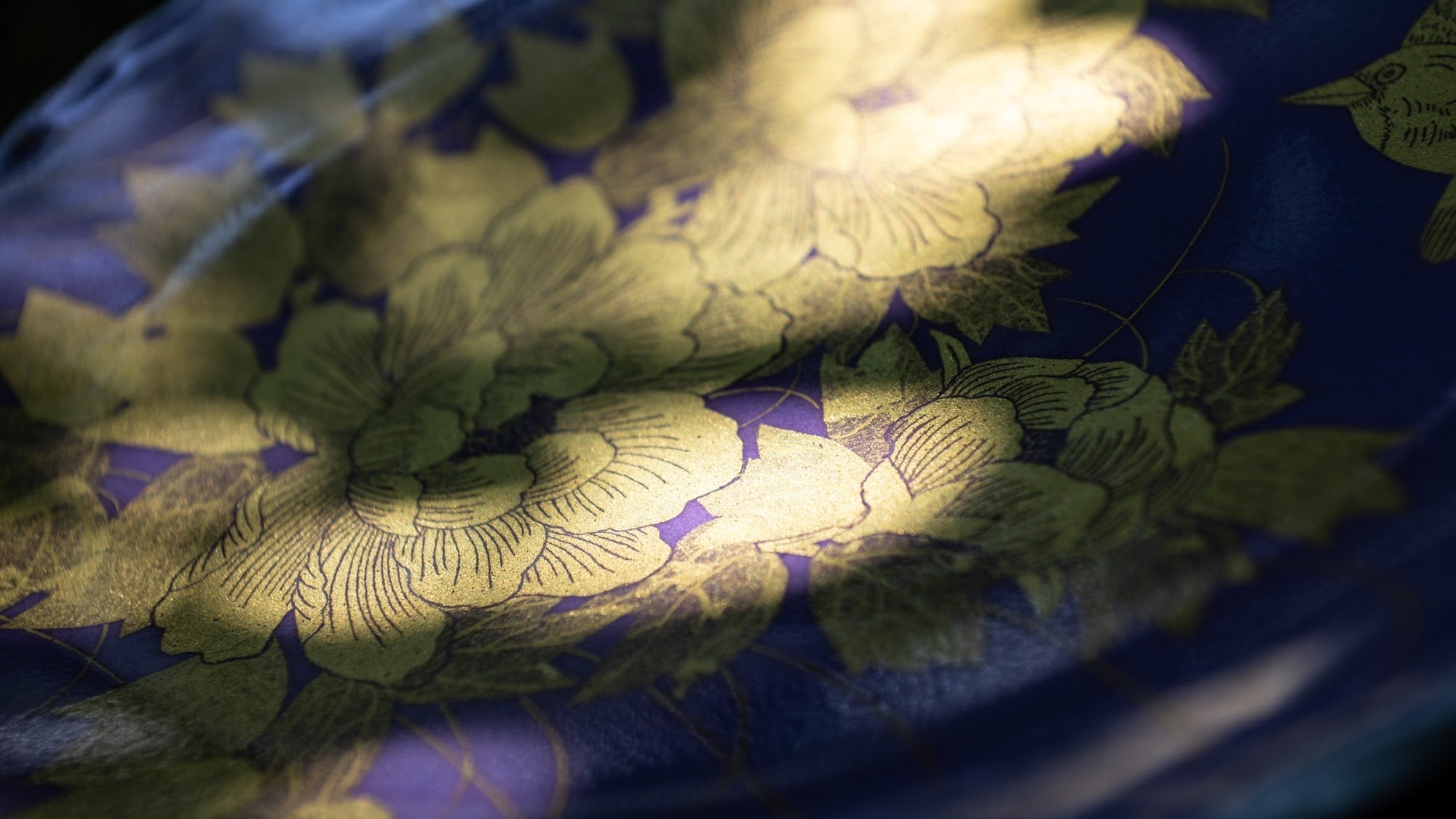
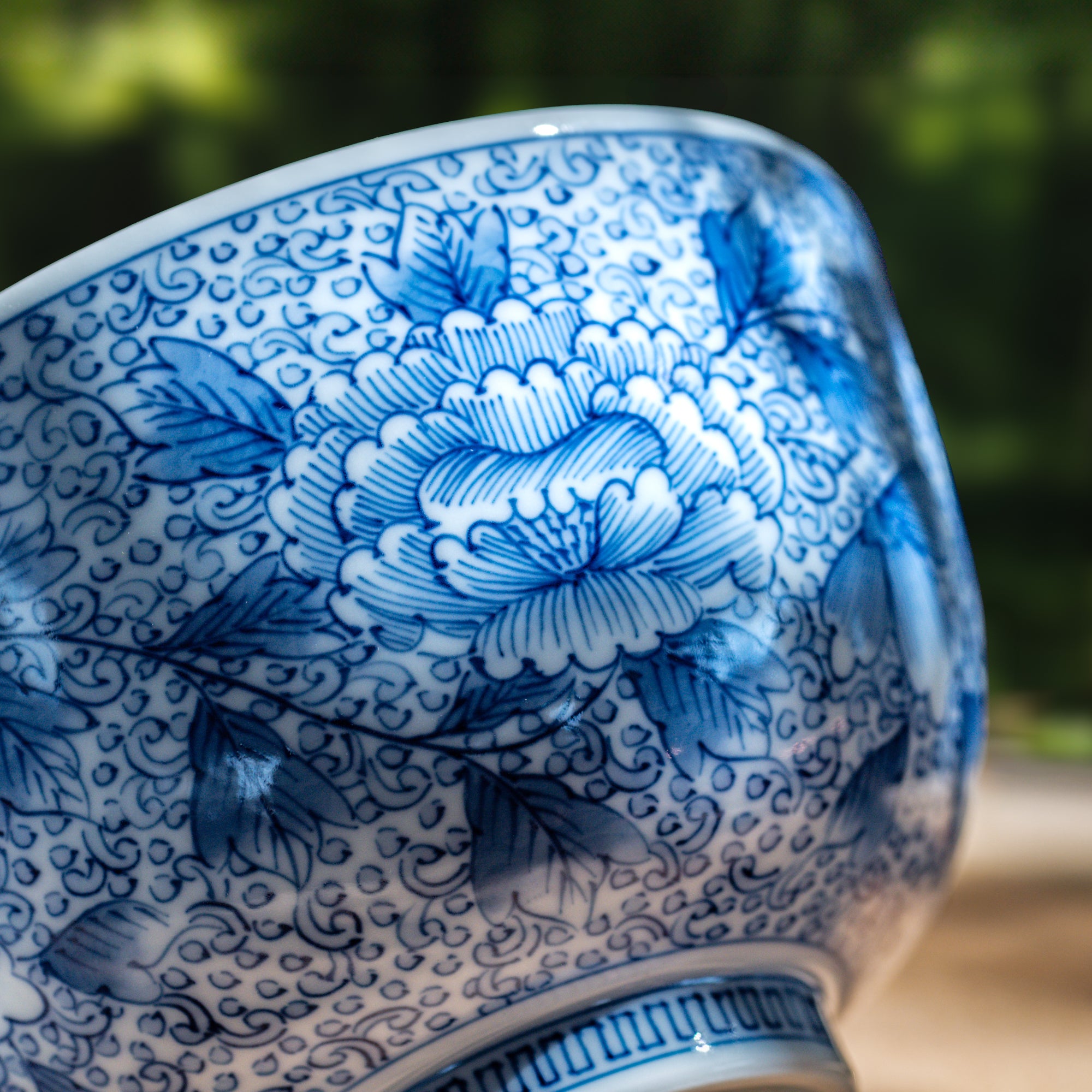
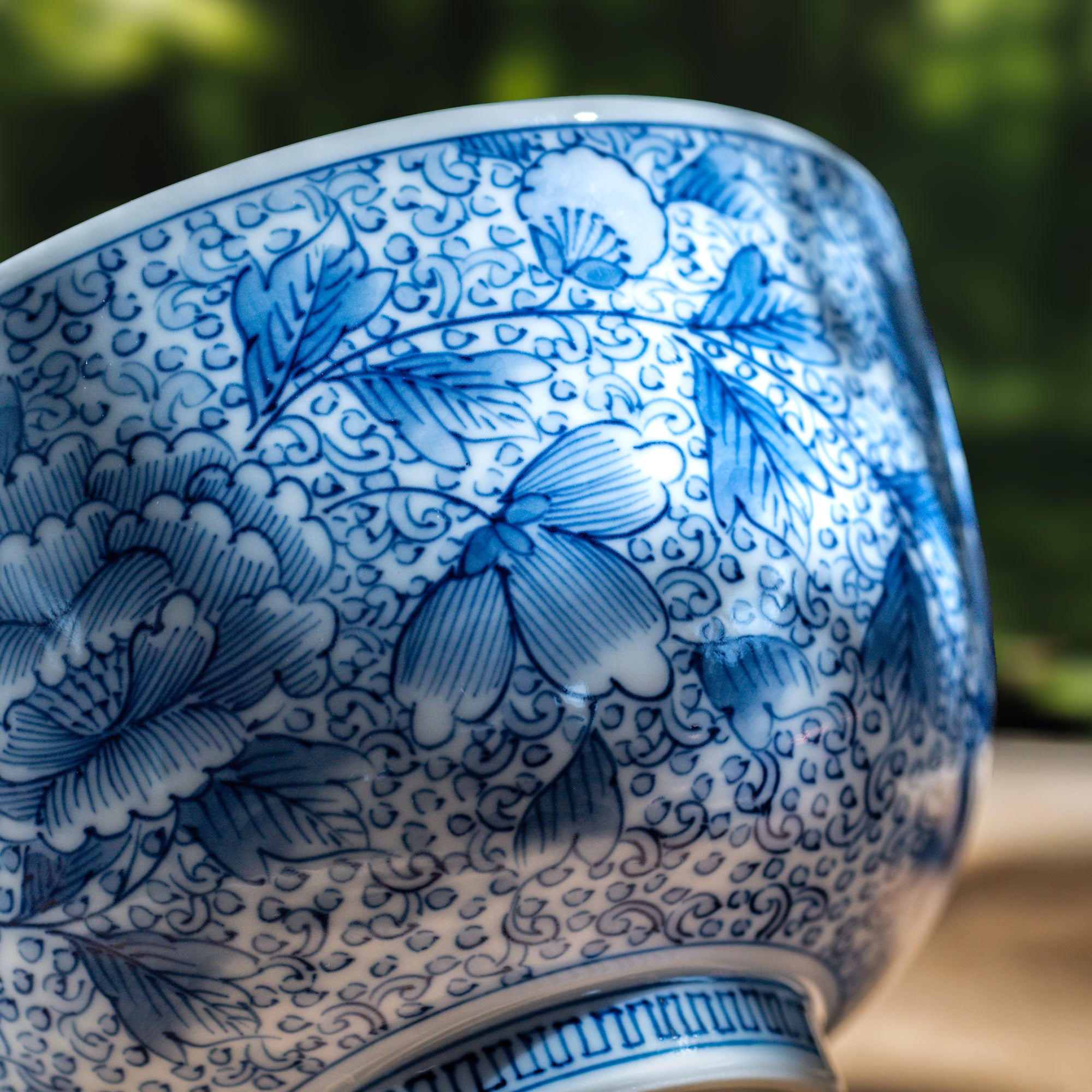
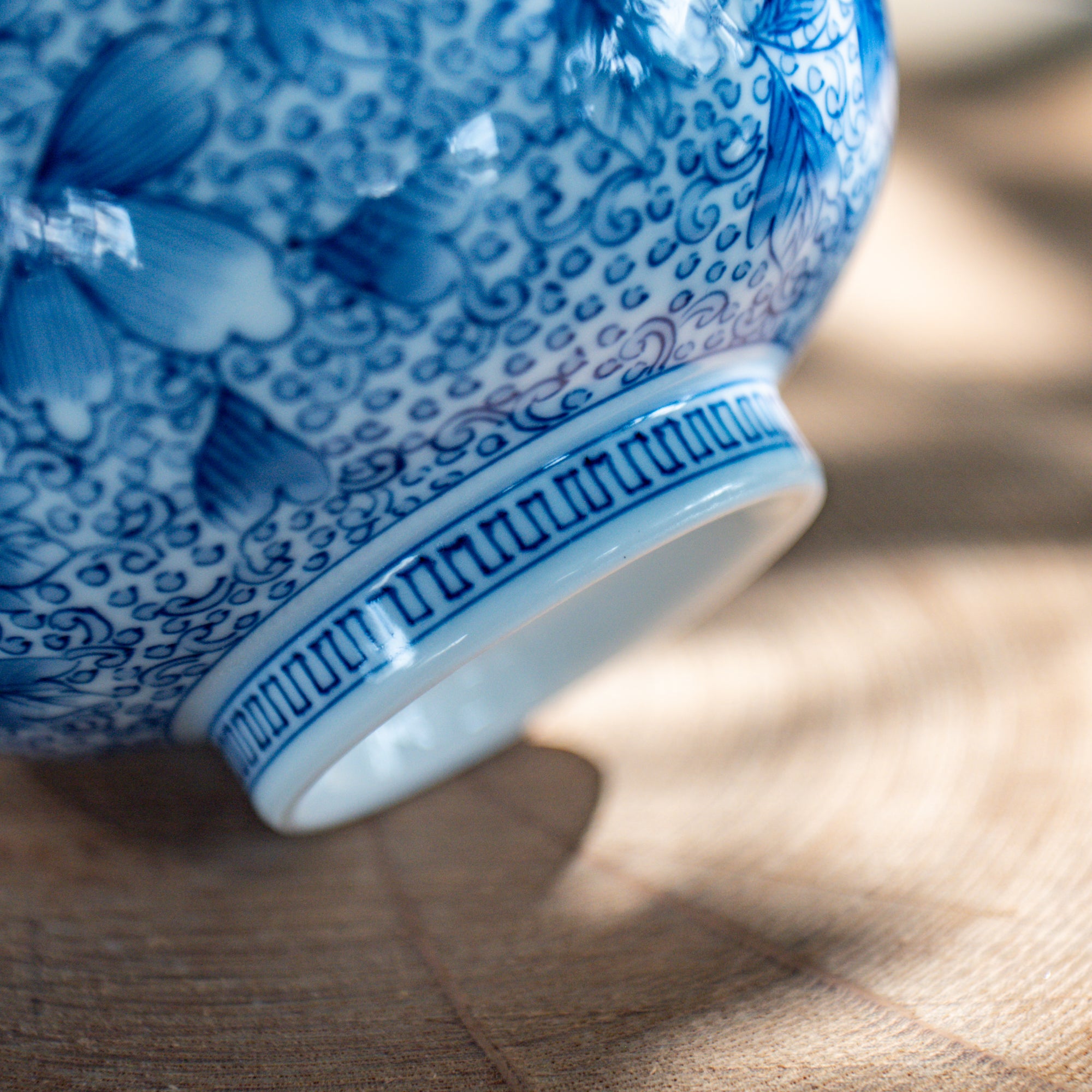
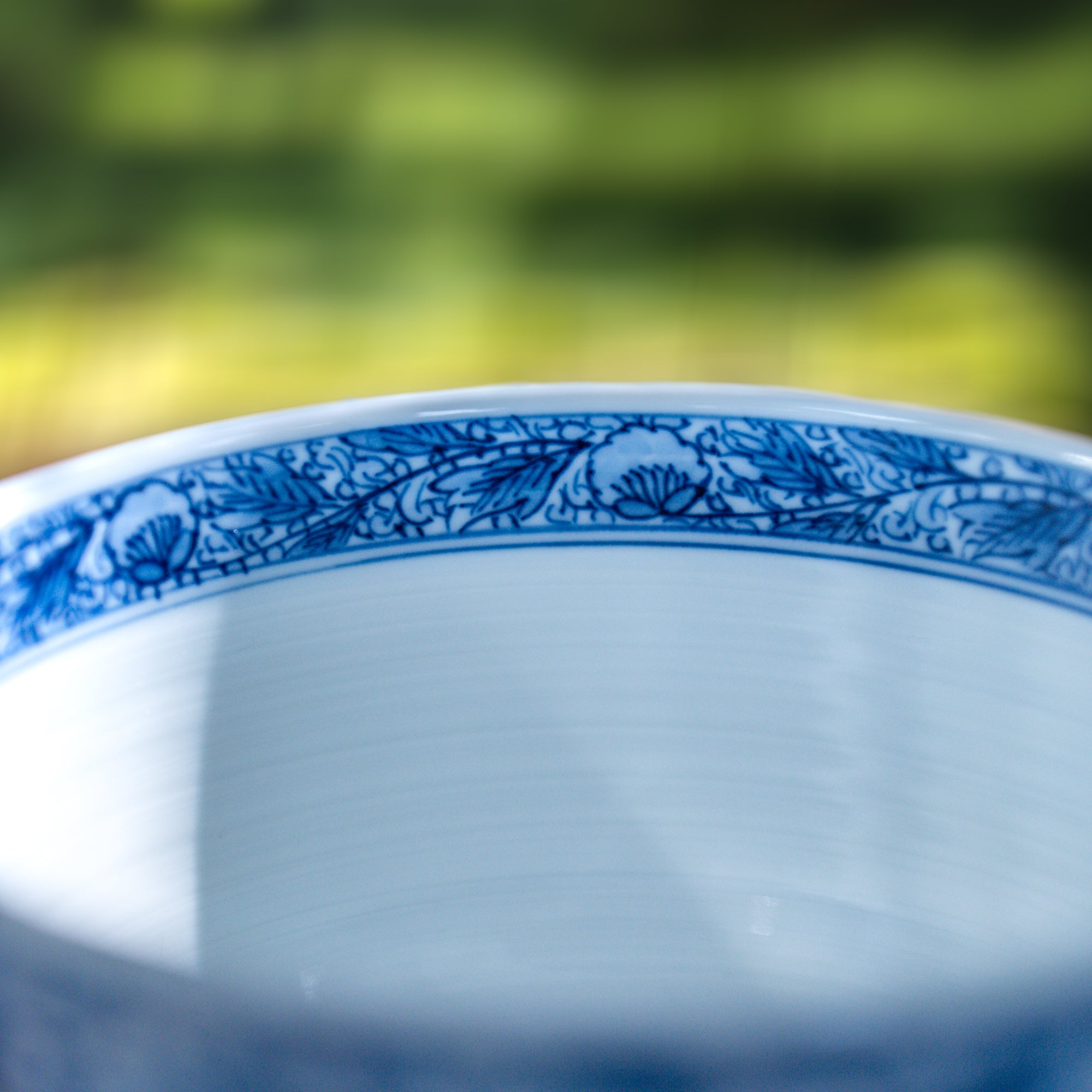
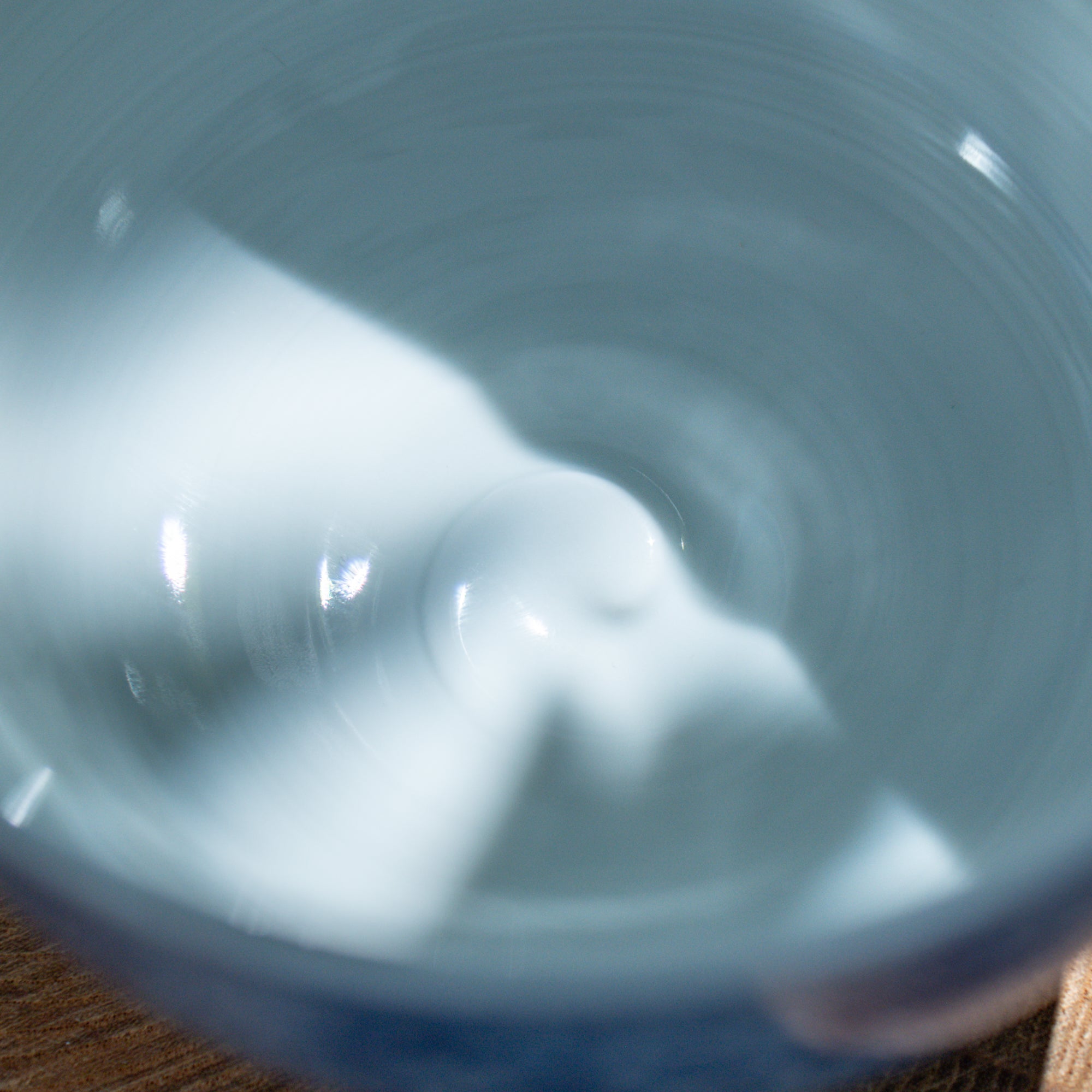
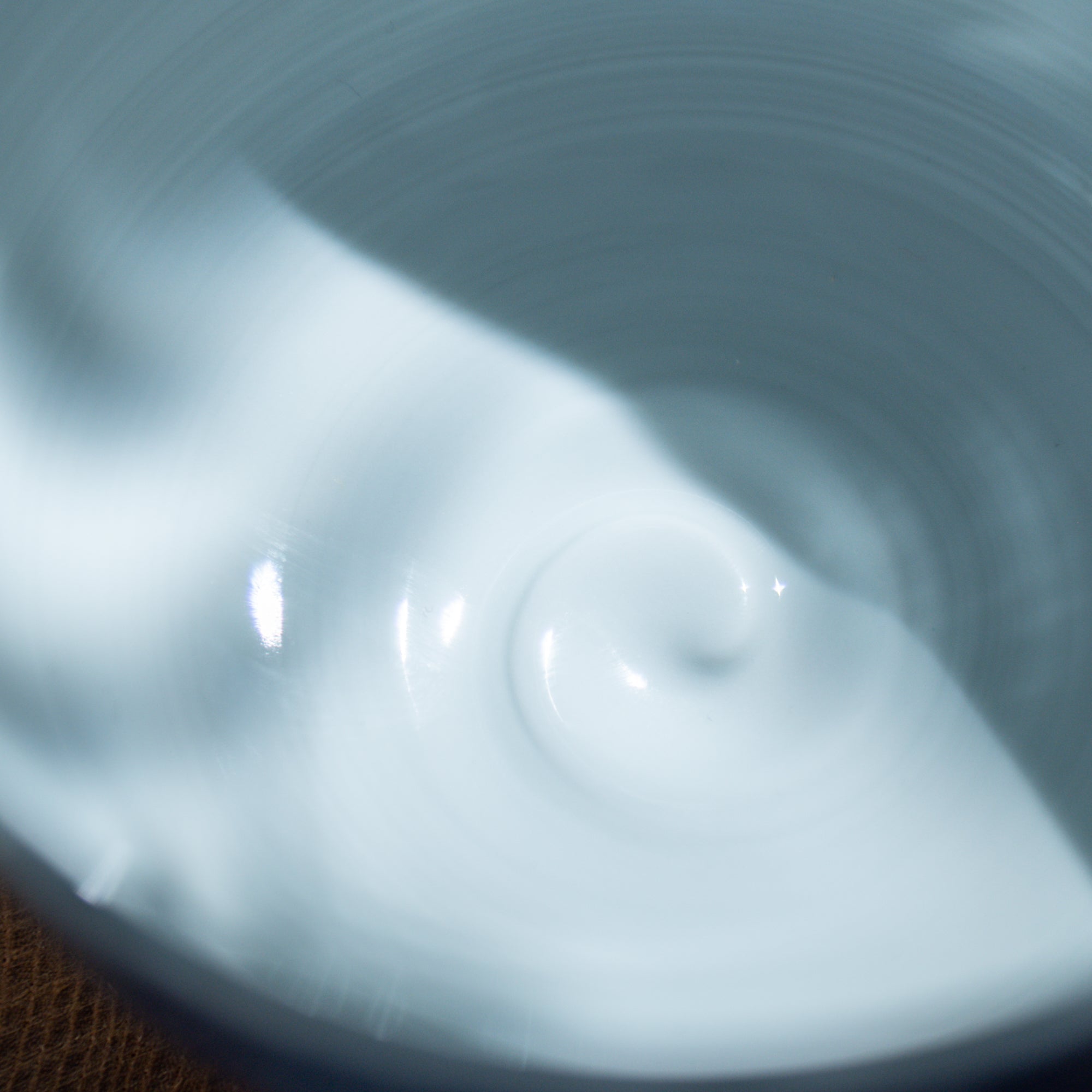


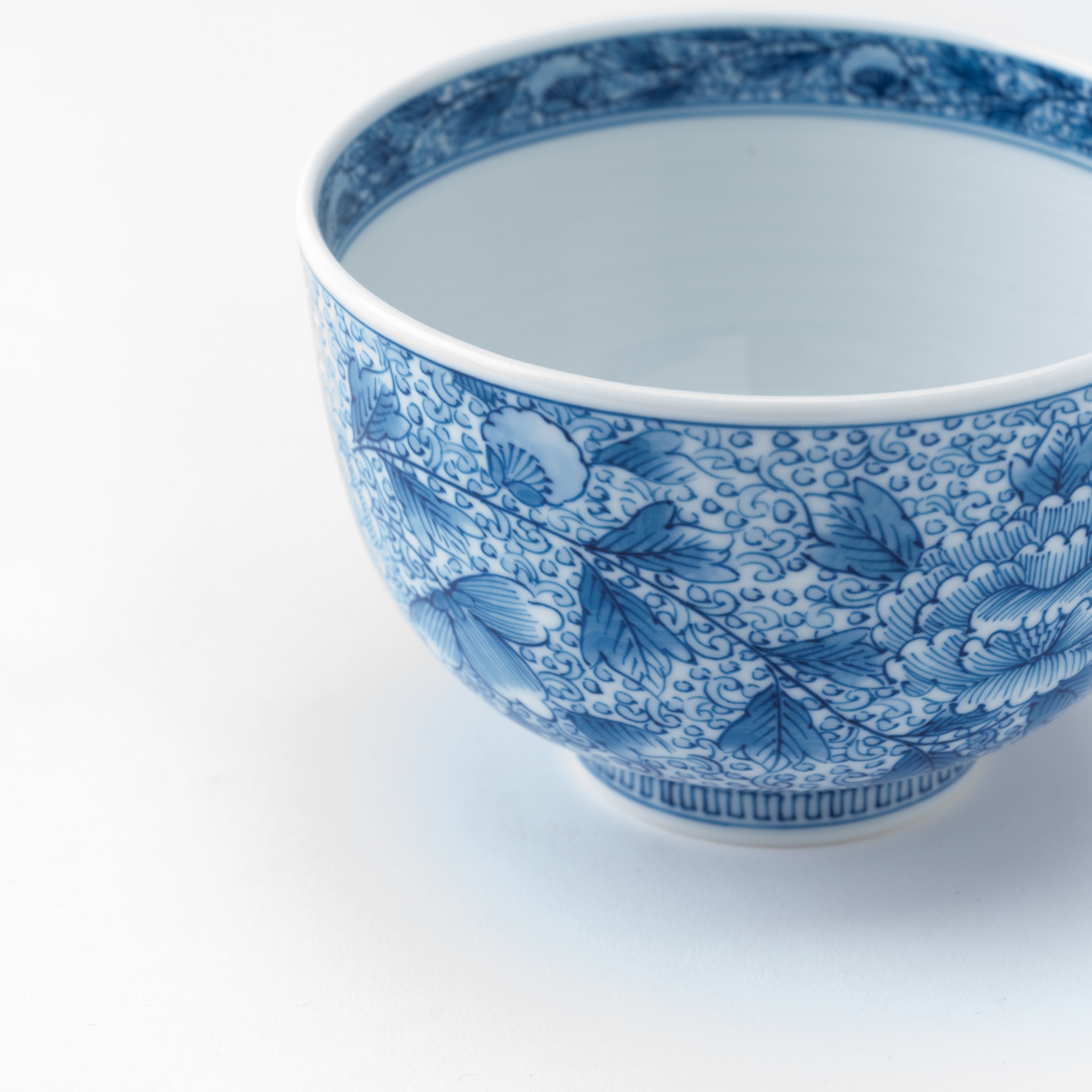
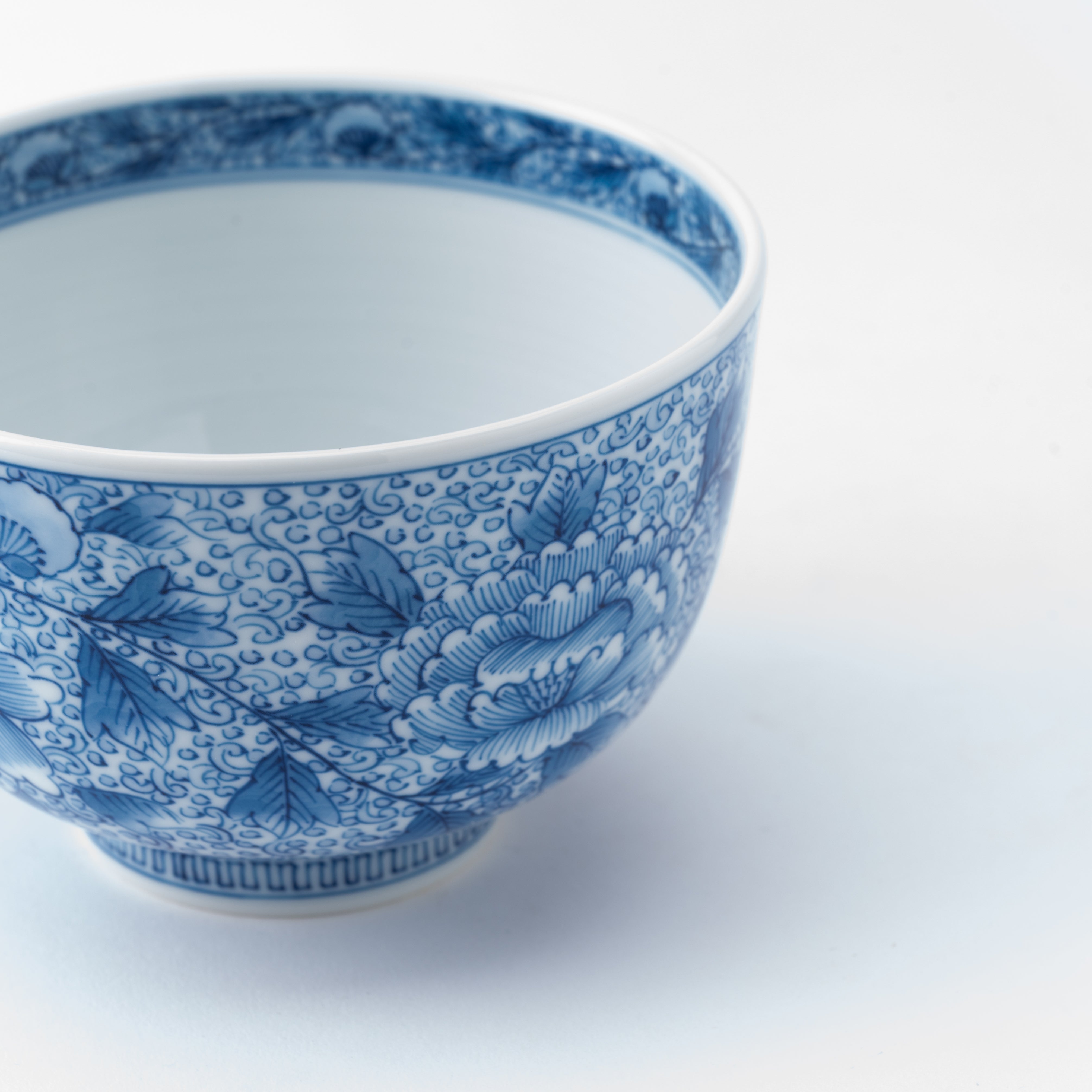




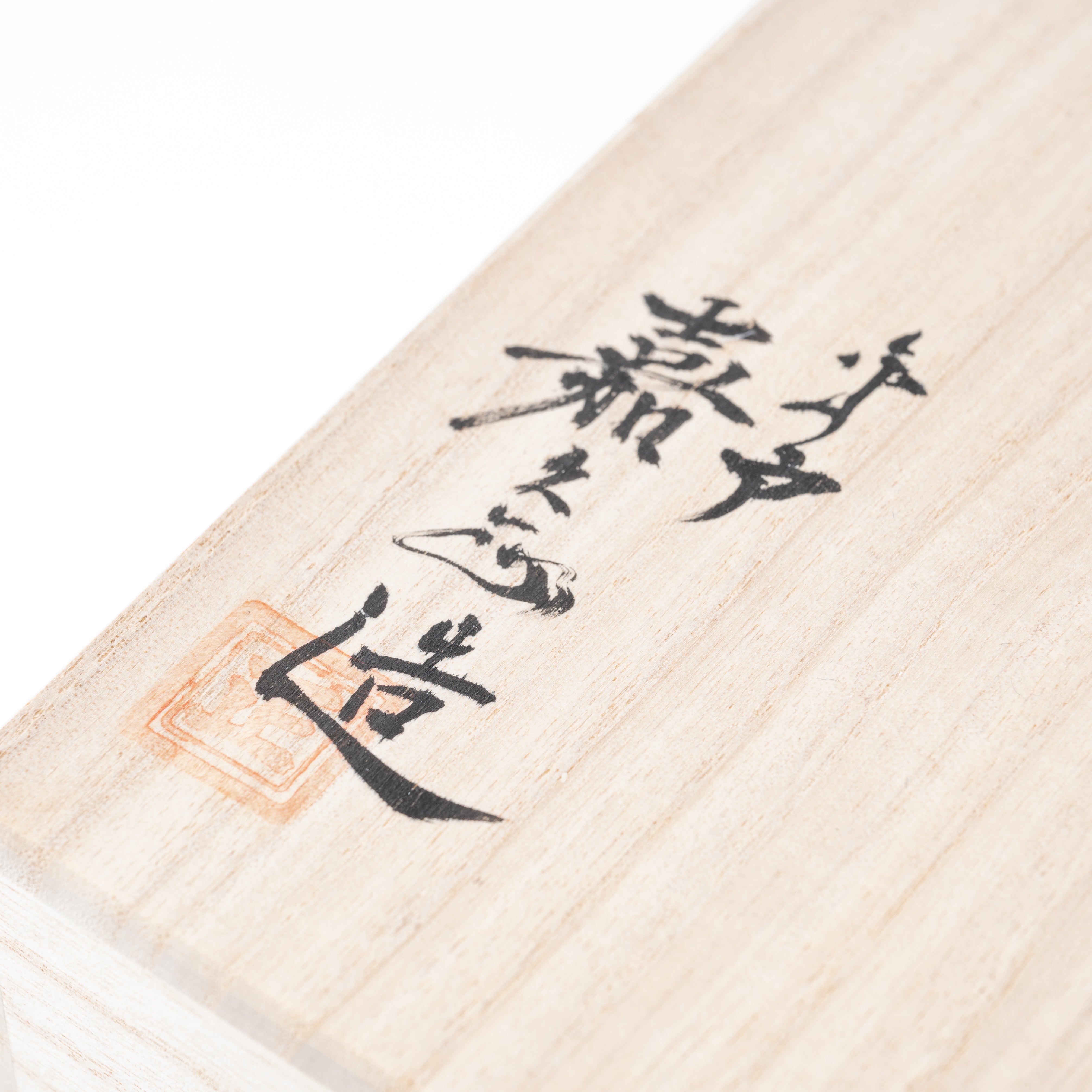
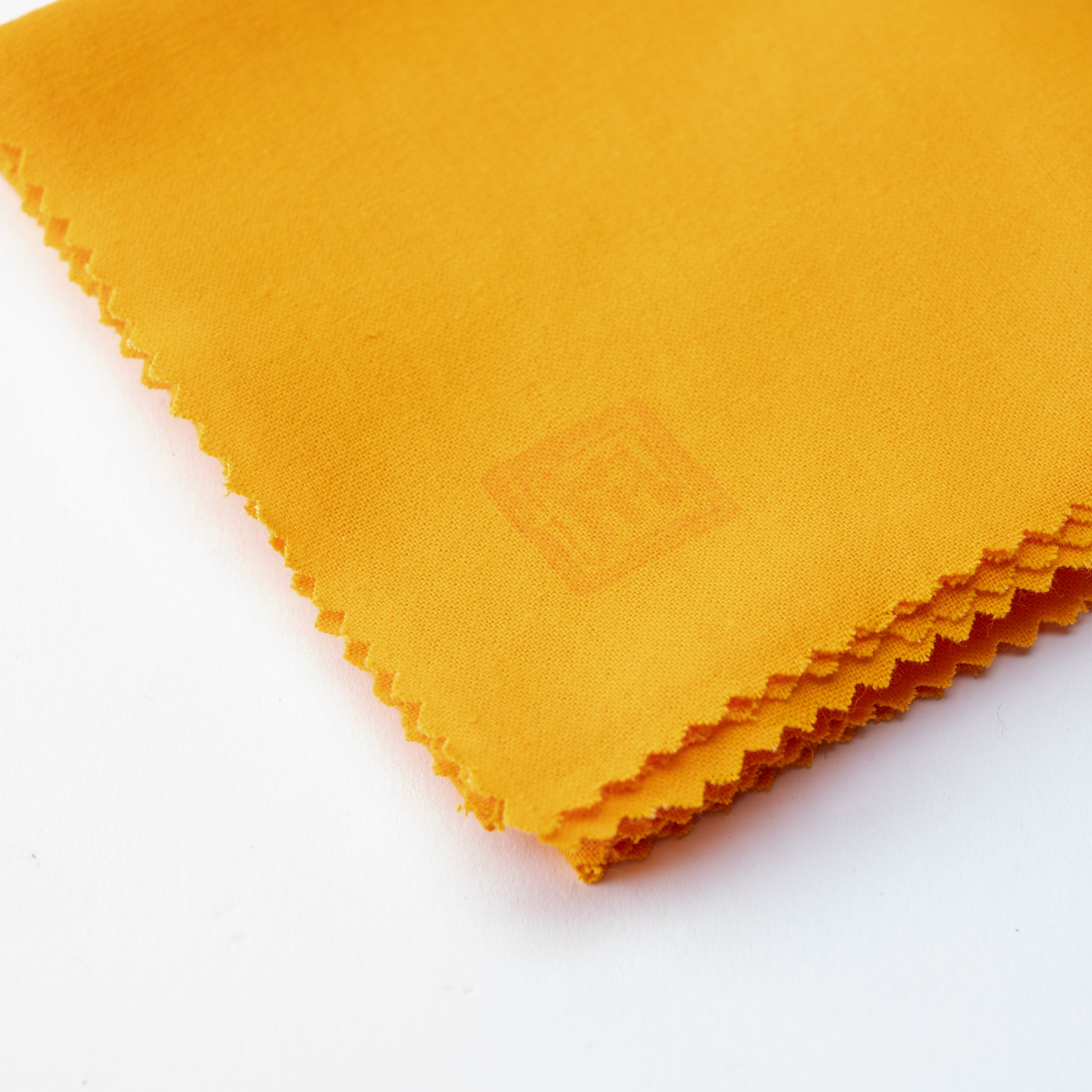

Peony Arabesque Patterned Matcha Bowl
This finely detailed blue and white matcha bowl is the masterwork of artist Satomi Toshitaka. Using gosu—an indigo pigment central to the art of sometsuke—he applies his expert touch with a brush as fine as a single hair onto the translucent white canvas of Mikawachi ware. The result is a vessel that exudes a beguiling sense of tradition and calm.
Satomi employs the celebrated sometsuke underglaze method in crafting this matcha bowl. On a bisqued base, he meticulously paints the motifs in thin, smooth lines. This foundational step defines the composition and prepares the surface for the tonal shading that follows.
Satomi’s use of tsukedami demonstrates his extraordinary control and sensitivity to form. Using a specially crafted, densely bristled brush, he loads the gosu and holds it steady and horizontal, allowing the color to seep into the bisqueware as if poured. Because the porcelain is highly absorbent, each stroke must be completed in a single, uninterrupted motion—only then can the subtle transitions and polished finish that define his work be achieved. Mastery of this technique requires not only a precise hand, but also years of dedicated practice.
Every line appears to breathe—graceful without stiffness—imbuing the form with a naturally harmonious spirit. The matcha bowl’s poised silhouette and rim enhance both sight and touch, transforming the simple act of whisking tea into a serene ritual. Perfect for connoisseurs of the tea ceremony, it brings a feeling of mindful presence to every moment.
DETAILS
| Quantity | 1 |
| Size |
D 12.0 cm (4.7 in) x H 8.0 cm (3.1 in) [Wooden Box] L 15.5 cm (6.1 in) x W 15.5 cm (6.1 in) x H 13.0 cm (5.1 in) |
| Capacity | 340 ml (11.5 fl oz) |
| Weight | 230 g (8.1 oz) |
| Material | Porcelain |
| Package Type | Wooden box |
| Microwave | Yes |
| Dishwasher | No |
Maker / Brand
Satomi Toshitaka is the third-generation master of Kakusho Kiln. A descendant of kiln artisans who served the Hirado domain, he carries on the 350-year legacy of the kiln, specializing in the hand-painted sometsuke that defines Mikawachi ware.
Satomi remains faithful to the tradition of treating each piece as a unique work of art, while also embracing contemporary design sensibilities. In addition, he is engaged in the revival of refined tableware from the Meiji (1868–1912 CE) and Taisho (1912–1926 CE) eras, preserving and reinterpreting historical techniques for the present day.
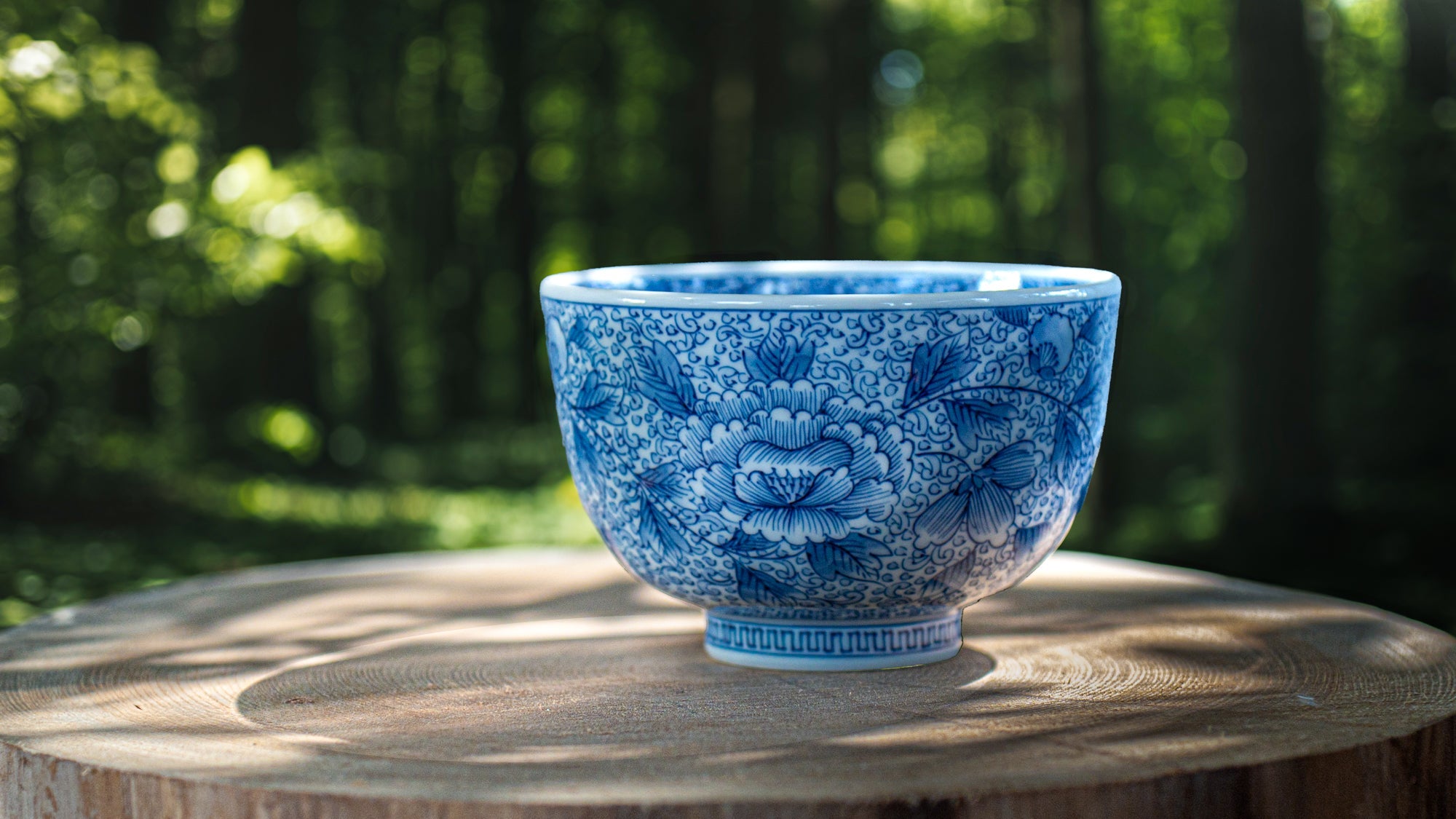
Crafts
Mikawachi ware, also known as Hirado ware, is a pottery made in Sasebo City, Nagasaki Prefecture, Japan. Known for its translucent white porcelain, it was highly popular in Europe during the trend toward Japanese crafts in the West in the 20th century. Mikawachi ware is remarkable for its delicate modeling techniques that push the limits of porcelain, such as openwork and relief carving, and for its beautiful painting that looks like a single piece of art.
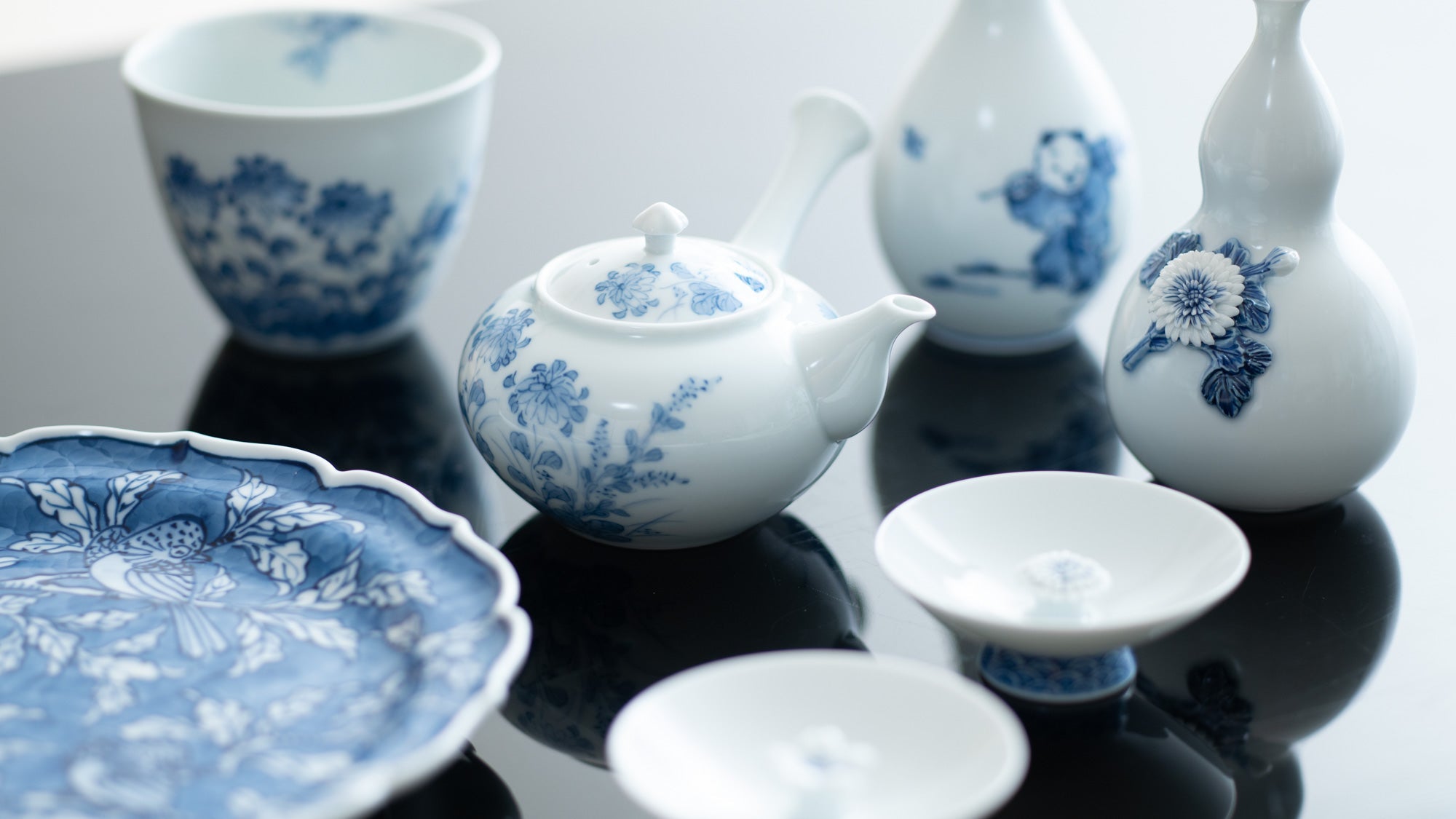
Choose options
About Artist
Musubi Gallery
Since its inception, MUSUBI KILN has strived to introduce the world to the finest traditional crafts from masters all around Japan.
Here, in the Gallery, we seek to showcase the highest echelon of traditional techniques passed down through generations. You can discover works from masters who have not only perfected those methods, but added their imagination to innovate the craft even further.
Some of these masters have even been named Living National Treasures, a title bestowed upon them by the Japanese government to formally recognize their contribution to crafts and culture — thereby cementing their legacy and making them an important part of art history.
Each piece is meticulously handcrafted over many months to create a timeless treasure that's unlike any other. And when it's in your home, you, too, will become part of that history.
Welcome to the Gallery. Please, peruse at your leisure.
